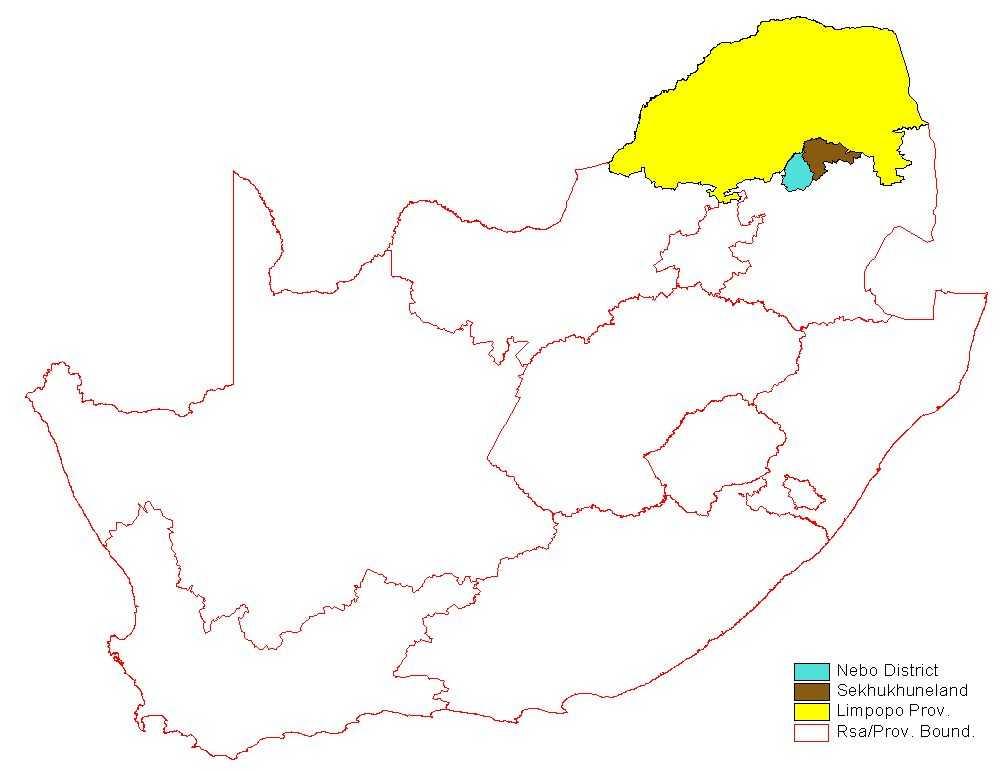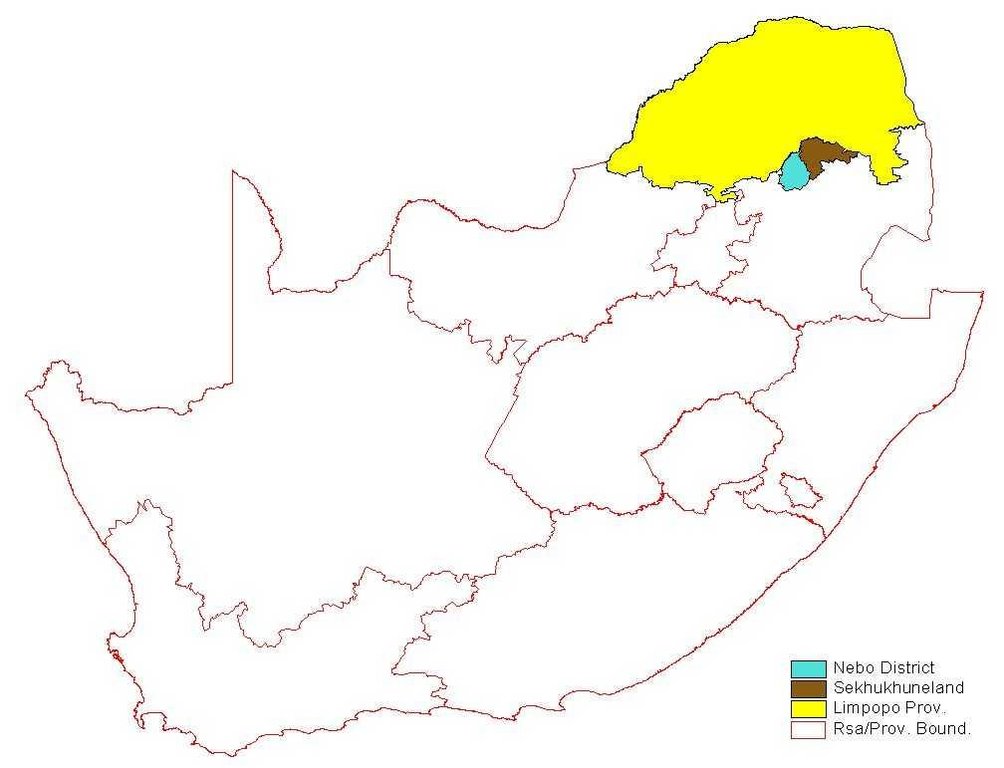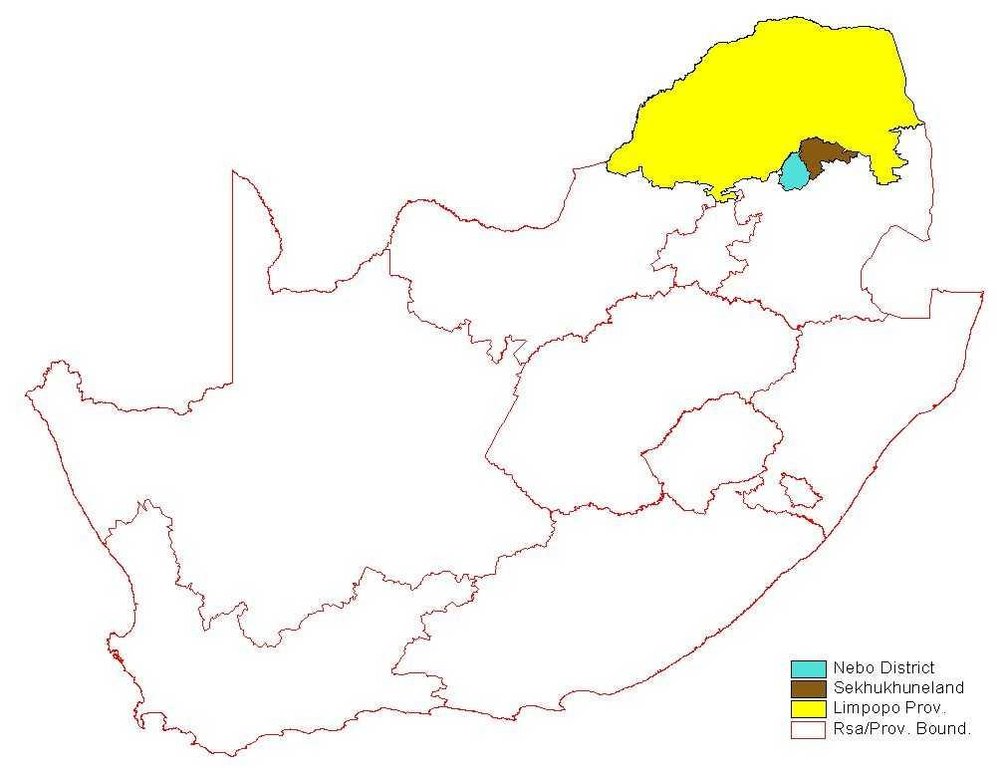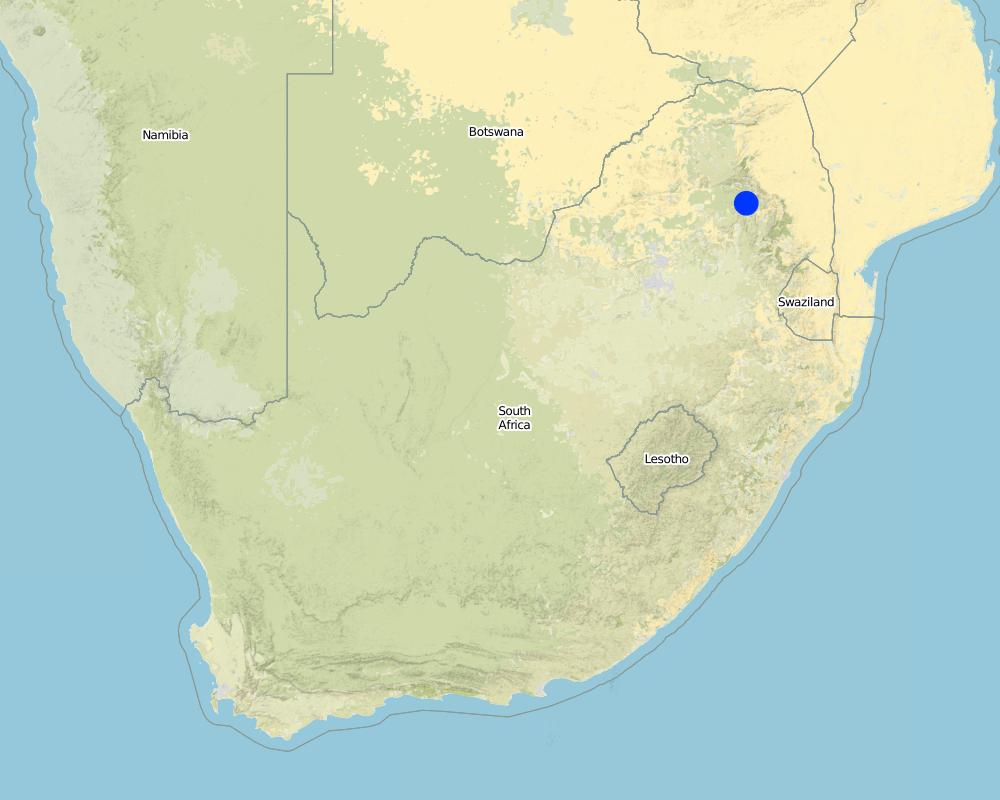Interactive community approach, biodiversity increase. [South Africa]
- Creation:
- Update:
- Compiler: Igmé Wilhelm Terblanche
- Editor: –
- Reviewer: Fabian Ottiger
approaches_2415 - South Africa
View sections
Expand all Collapse all1. General information
1.2 Contact details of resource persons and institutions involved in the assessment and documentation of the Approach
Name of the institution(s) which facilitated the documentation/ evaluation of the Approach (if relevant)
Action Green Heritage (Action Green Heritage) - South Africa1.3 Conditions regarding the use of data documented through WOCAT
The compiler and key resource person(s) accept the conditions regarding the use of data documented through WOCAT:
Yes
1.4 Reference(s) to Questionnaire(s) on SLM Technologies

Gully control (gabions) at Maandagshoek [South Africa]
Stone walls and re-vegetation (planting of indigenous trees) = Rehabilitation
- Compiler: Igmé Wilhelm Terblanche
2. Description of the SLM Approach
2.1 Short description of the Approach
Community involvement
2.2 Detailed description of the Approach
Detailed description of the Approach:
Aims / objectives: Community involvement in SWC and environmental conservation. SWC project for erosion control, reduction of siltation, water conservation, biodiversity increase, and environmental education. An interactive method in some cases combined the approach of the Department or Action Green Heritage, who worked through the tribal chief (traditional authority), the relevant government representatives (extension), and the Transitional Local Council (TLC - Government elected body e.g. municipality). The SWC projects are still in the on-going phase, having passed the implementation stage. The Nature reserves are also on going (the development phase has been finalised). The SWC programmes of NGO and government extension officer, environmental education officer and community are interlinked with the NGO for funding, the Government provides technical background and the TLC ensures broad involvement.
2.3 Photos of the Approach
2.5 Country/ region/ locations where the Approach has been applied
Country:
South Africa
Region/ State/ Province:
Northern Province
Map
×2.6 Dates of initiation and termination of the Approach
Indicate year of initiation:
1984
2.7 Type of Approach
- project/ programme based
2.8 Main aims/ objectives of the Approach
The Approach focused mainly on SLM with other activities (Nearby school involved environmental education for the school children, community, leaders (chiefs) and politicians involved)
Raising awareness, reduce silt soil loss. Nature reserve: financial gain for the community, protection of natural resources & increase biodiversity, awareness raising. Erosion projects: reduce siltation and soil loss and raising awareness. Natural Resource: Financial gain, protection of Natural Resources, an increase in biodiversity and raising awareness. To get community involvement in environmental issues
The SLM Approach addressed the following problems: Awareness, silt up of dams and rivers, land degradation (erosion) In nature reserves: land degradation, poverty, awareness, not sensitive enough for environmental problems. Erosion project: land degradation, siltation of dams/rivers. Nature Reserves: land degradation, poverty, awareness (lack of environmental knowledge)
2.9 Conditions enabling or hindering implementation of the Technology/ Technologies applied under the Approach
social/ cultural/ religious norms and values
- hindering
High population density - shortage of land - not always so easy to get land for building up nature reserve
Treatment through the SLM Approach: Awareness & project economic sustainable (that community can financially benefit)
availability/ access to financial resources and services
- hindering
Not enough funding
Treatment through the SLM Approach: Keep on looking for funding & generate a bigger awareness of the problem & what could be done, also outside of government like Olifant river forum (some people are there involved with a lot of funding behind them)
legal framework (land tenure, land and water use rights)
- enabling
The existing land ownership, land use rights / water rights moderately helped the approach implementation: communal land if supported from tribal chief hinder: moderate: communal land if no ownership, a lot of people
other
- hindering
Develop a project across a tribal border
Treatment through the SLM Approach: Environmental education
3. Participation and roles of stakeholders involved
3.1 Stakeholders involved in the Approach and their roles
- local land users/ local communities
Action Green Heritage. People living in the area
In tribal meetings mainly men, for work mainly women. Chief will not take any decision before the community agreed
- NGO
- local government
Provincial government
- national government (planners, decision-makers)
3.2 Involvement of local land users/ local communities in the different phases of the Approach
| Involvement of local land users/ local communities | Specify who was involved and describe activities | |
|---|---|---|
| initiation/ motivation | passive | public meetings; Rapid/participatory rural appraisal is used today |
| planning | passive | rapid/participatory rural appraisal, public meetings |
| implementation | none | |
| monitoring/ evaluation | passive | public meetings, reporting; |
| Research | none |
3.4 Decision-making on the selection of SLM Technology/ Technologies
Specify who decided on the selection of the Technology/ Technologies to be implemented:
- mainly SLM specialists, following consultation with land users
Explain:
consultative.
Decisions on the method of implementing the SLM Technology were made by mainly by SLM specialists with consultation of land users. consultative.
4. Technical support, capacity building, and knowledge management
4.1 Capacity building/ training
Was training provided to land users/ other stakeholders?
Yes
Form of training:
- on-the-job
Subjects covered:
On the site for work, fencing, gabions, planting of trees
4.2 Advisory service
Do land users have access to an advisory service?
Yes
Describe/ comments:
Name of method used for advisory service: LEP; Key elements: NGO was responsible for education for the people of Lebowa; 1) Advisory service was carried out through: non-governmental agency. Extension staff: Government & NGO 2) Target groups for extension: land users, politicians/decision makers; Activitie
Advisory service is quite adequate to ensure the continuation of land conservation activities; They have the staff
4.3 Institution strengthening (organizational development)
Have institutions been established or strengthened through the Approach?
- yes, greatly
Specify the level(s) at which institutions have been strengthened or established:
- local
Specify type of support:
- financial
- capacity building/ training
- equipment
4.4 Monitoring and evaluation
Is monitoring and evaluation part of the Approach?
Yes
Comments:
bio-physical aspects were ad hoc monitored through measurements
technical aspects were ad hoc monitored through observations
socio-cultural aspects were ad hoc monitored through observations
economic / production aspects were ad hoc monitored through measurements
area treated aspects were ad hoc monitored through measurements;
no. of land users involved aspects were ad hoc monitored through observations
management of Approach aspects were ad hoc monitored through observations
There were few changes in the Approach as a result of monitoring and evaluation: Involvement of the community in the project from the beginning to a great extent. Reduction of animal numbers.
5. Financing and external material support
5.1 Annual budget for the SLM component of the Approach
If precise annual budget is not known, indicate range:
- 100,000-1,000,000
Comments (e.g. main sources of funding/ major donors):
Approach costs were met by the following donors: government (national - Nature reserve): 80.0%; international non-government (-): 20.0%
5.2 Financial/ material support provided to land users
Did land users receive financial/ material support for implementing the Technology/ Technologies?
Yes
5.3 Subsidies for specific inputs (including labour)
- equipment
| Specify which inputs were subsidised | To which extent | Specify subsidies |
|---|---|---|
| machinery | fully financed | |
| tools | fully financed | |
If labour by land users was a substantial input, was it:
- paid in cash
5.4 Credit
Was credit provided under the Approach for SLM activities?
No
6. Impact analysis and concluding statements
6.1 Impacts of the Approach
Did the Approach help land users to implement and maintain SLM Technologies?
- No
- Yes, little
- Yes, moderately
- Yes, greatly
N/A
Did other land users / projects adopt the Approach?
- No
- Yes, little
- Yes, moderately
- Yes, greatly
Personnel, some was transferred to other Departments and localities
6.3 Sustainability of Approach activities
Can the land users sustain what has been implemented through the Approach (without external support)?
- uncertain
If no or uncertain, specify and comment:
In practice maybe because of the need of financial support for staff and management of game Soil conservation - without leading it is not possible
6.4 Strengths/ advantages of the Approach
| Strengths/ advantages/ opportunities in the land user’s view |
|---|
| financial |
| job opportunities |
| are part of the management |
| Strengths/ advantages/ opportunities in the compiler’s or other key resource person’s view |
|---|
| involvement of community |
| ownership of the land |
| little damage & high potential |
| get financial benefits - uplifting living-standard |
| sustainable jobs, protection |
| if transferred to community - can be financed from outside e.g. Development bank, this is only possible if fully transferred to the community |
6.5 Weaknesses/ disadvantages of the Approach and ways of overcoming them
| Weaknesses/ disadvantages/ risks in the land user’s view | How can they be overcome? |
|---|---|
| would like to have more influence in the management |
| Weaknesses/ disadvantages/ risks in the compiler’s or other key resource person’s view | How can they be overcome? |
|---|---|
| Smaller reserves are overstaffed and poor management - transfer to the community and then employ a manager from outside (may be a solution). | |
| Nature reserves are still regarded as government nature reserves (financial and run). Only if community is to some extent involved in the management, people take ownership. |
7. References and links
7.1 Methods/ sources of information
- field visits, field surveys
- interviews with land users
Links and modules
Expand all Collapse allLinks

Gully control (gabions) at Maandagshoek [South Africa]
Stone walls and re-vegetation (planting of indigenous trees) = Rehabilitation
- Compiler: Igmé Wilhelm Terblanche
Modules
No modules





